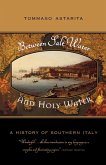Windmills and water mills are truly the wonders of an earlier era, the wooden technology of yesteryear. To us, they may be graceful and charming relics. To the colonists, however, they were a vital necessity. Colonial craftsmen constructed them to mill grain, saw wood, pump water, and do various other jobs. Furthermore, the mill was the gathering place for the villagers. While they waited for their grain to be milled, the villagers exchanged news and gossip and stories. Millers were well respected not only for their mill's output but also for their own weather forecasts, knowledge of engines and machines, and, of course, up-to-date news. Long Island is an ideal place for catching the steady wind from the ocean and bays: 125 miles long, narrow--only 20 miles across at its widest, and relatively flat. Thus, many windmills were built here and still exist here, particularly at the island's east end. As a matter of fact, the south fork of eastern Long Island contains the greatest number of surviving windmills in the United States. Before 1700, Long Island also had many water mills, some of them powered by the tide.
Hinweis: Dieser Artikel kann nur an eine deutsche Lieferadresse ausgeliefert werden.
Hinweis: Dieser Artikel kann nur an eine deutsche Lieferadresse ausgeliefert werden.








